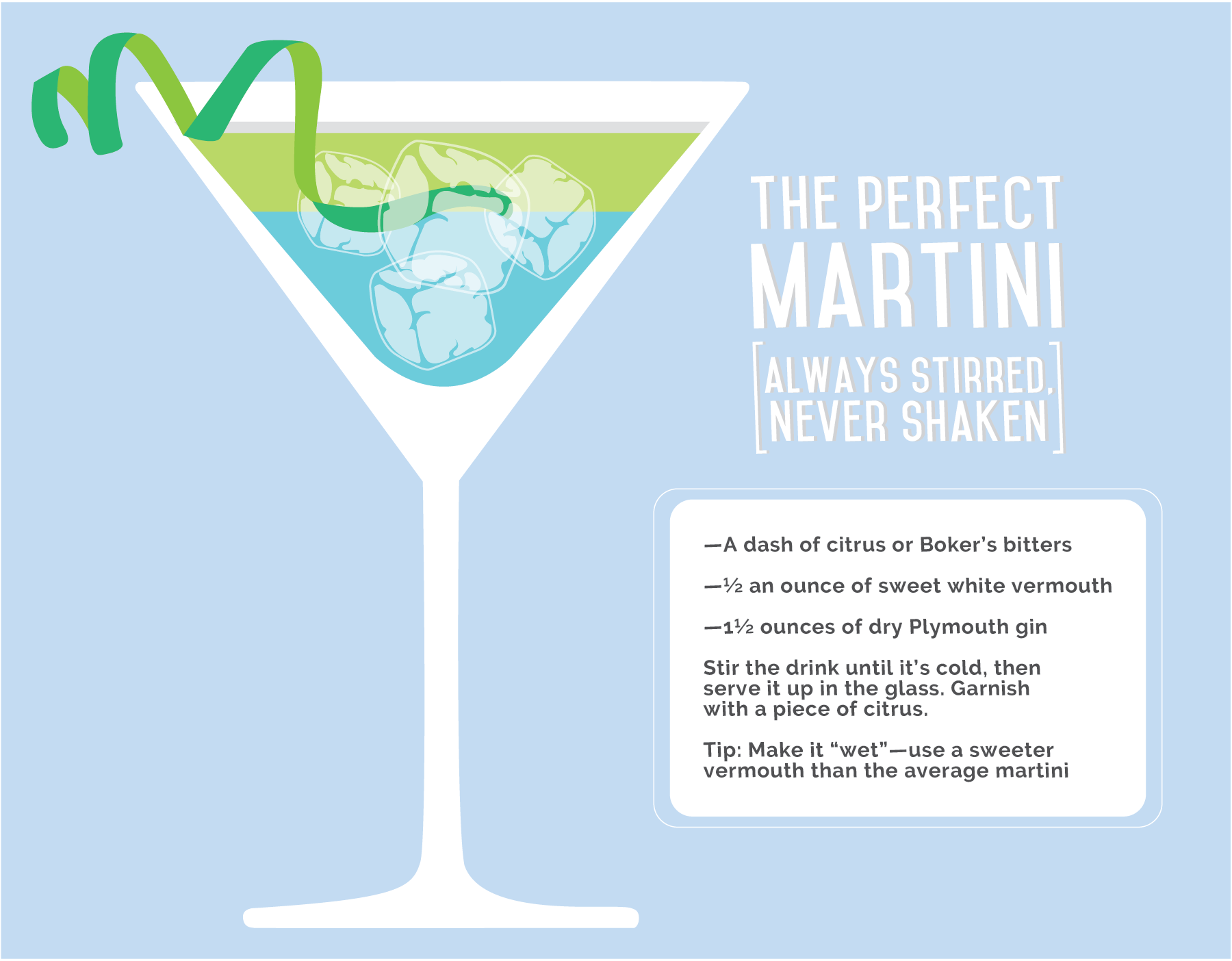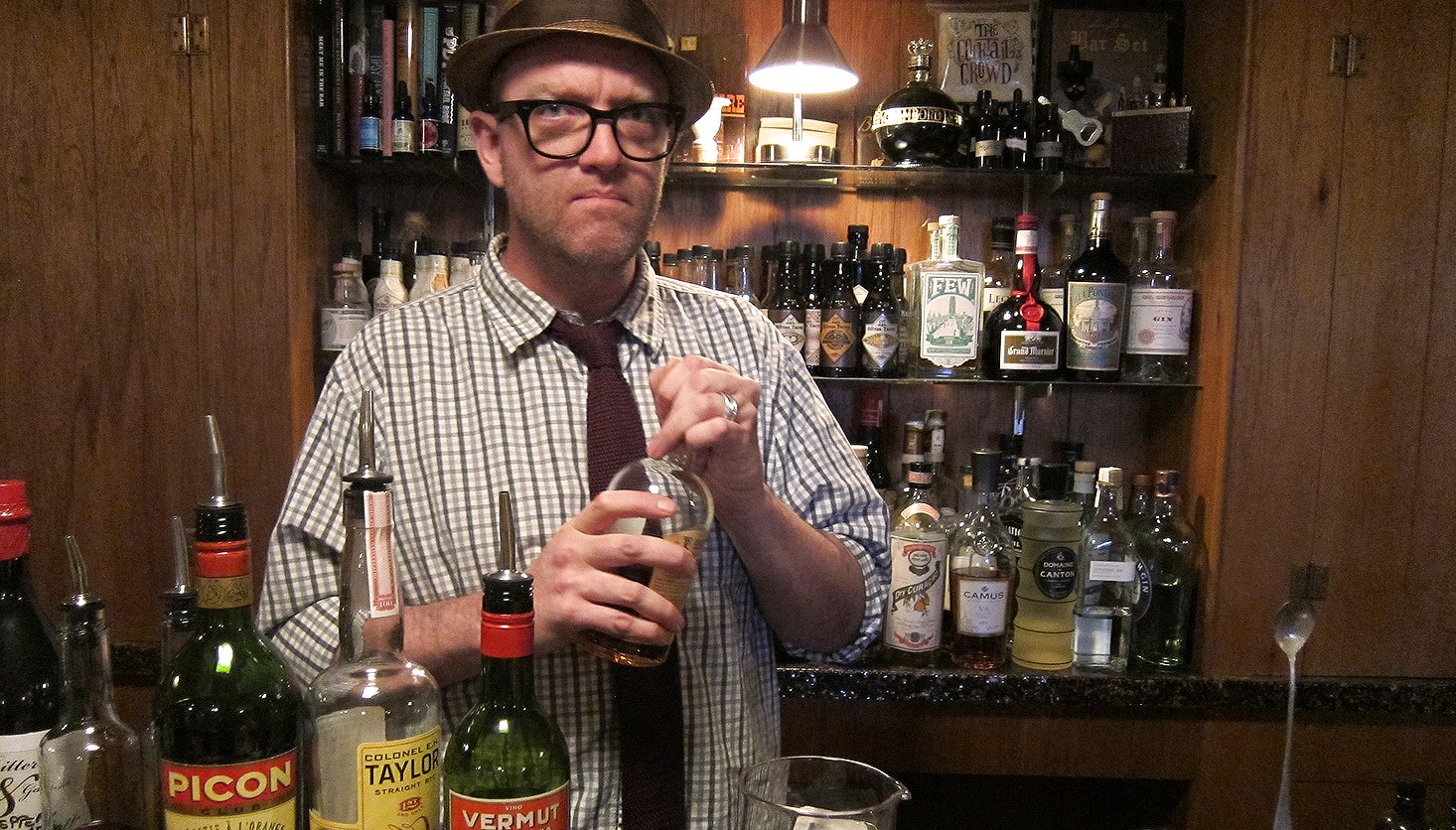Edward Burch is serving up history with Prohibition-style cocktails
Words by Sami Smith | Video by Grace Wenzel, Amanda Horvath and Faith Brar | Photography Courtesy of Rachel Leibowitz and Intemperance Cocktails | April 3, 2015
Nothing on the gold-flecked bartop is out of the ordinary. Strainers, shakers, and cocktail napkins blend in. But the shelves behind it — where typical bars stock cheap liqueurs and jars of chewy Maraschino cherries — hold this mixologist’s secret: books.

Edward Burch doesn’t just drink. He reads about drinking. He talks about drinking. He sees it as an art. He looks at an empty glass like a 6-year-old looks at a puzzle. Start with a base piece — the perfect, high-quality spirit. Test a handspun, pineapple-infused simple syrup to see if it fits. Lock it together with a real brandied cherry and two dashes of homemade, barrel-aged bitters.

This precision and passion for exceptional ingredients make this mixologist a master. His specialty is Prohibition-era cocktails — classic mixes of simple syrups and high-quality spirits like those secretly made during America’s dry 1920s. Saloons and Prohibition-style taverns are the places to be if you’re adventurous and searching for more than Jäger bombs or a rum and Coke. The secret to these watering holes is the intensely trained tenders behind the bars.
Burch became one of them 10 years ago. He had been a beer drinker and musician touring with former Wilco guitarist Jay Bennett, and washing down the occasional whiskey shot. He didn’t pester bartenders with complicated orders, just “a decent beer.” But after moving to Austin, Texas, he happened upon an expansive, big-box spirits store and that piqued an interest: the history of alcohol. Gradually, he collected spirits and started mixing, recreating Prohibition-era cocktails. “The elements that go along with these early versions of drinks are also very much intertwined with how the nation came together,” Burch says. “Whether it’s us in the U.S. dealing with whiskey after the corn surplus or France with grapes and cognac. I have this fascination with the historical element.”

After a few years of mixing on his own, Burch started offering his talents to others, and the word got out. After he moved to Springfield, Illinois, his hobby became a business — Intemperance Cocktails. Burch now travels throughout the Midwest as the liquory link to the past at historical events and celebrations. He scoops a 19th century punch or stirs classic sidecars for hosts at home events. He hand-selects and pours cocktails to replicate what Orson Welles may have been drinking at the Chicago Arts Club in 1938.
But through all of the study and practice of Prohibition-era mixology, Burch says there is room for modernity. “It doesn’t have to be a complete purist thing about the older era,” he says. “Even though we have a blessing of riches today with a lot of great bourbons, ryes, and cognacs, we live in the 21st century. We can’t try to completely reproduce what was happening back at that time. Processes and distillations are just different now. But we can certainly keep to the general spirit of it.”

Burch wants the world to know that improvisation while staying true to the spirit is OK. “If a thing just remains what it is forever, then it’s going to die out,” Burch says. “The cocktails I make today aren’t exactly what people would have been drinking in the Prohibition-era. But we’re remembering and respecting the traditions that preceded us. If we didn’t have those things from before, we wouldn’t have the things we’re doing now.”
Burch notes the time and turns to his bar.
“It’s the violet hour,” he says, mixing himself a boulevardier with whiskey, sweet vermouth, and Campari. “This is the time when you should be having a drink.”

